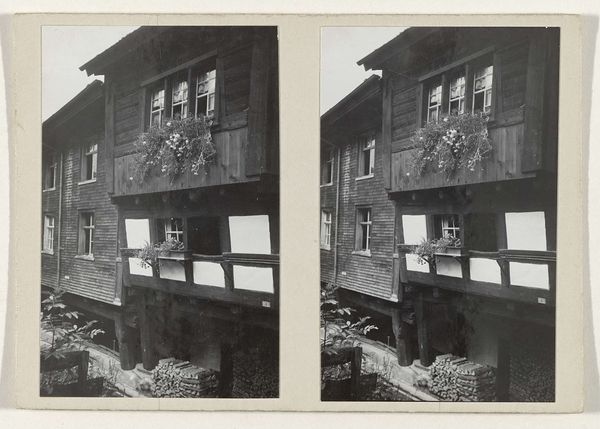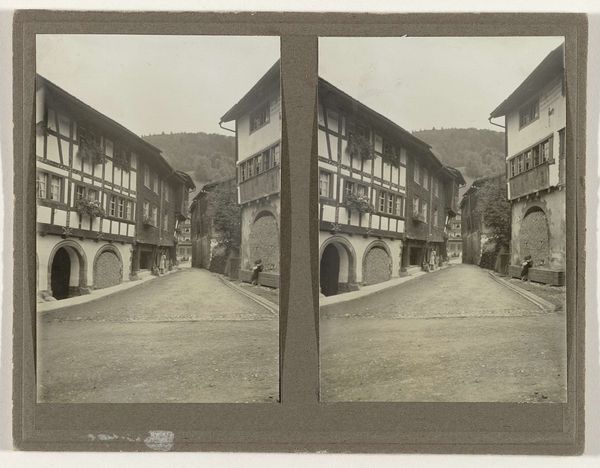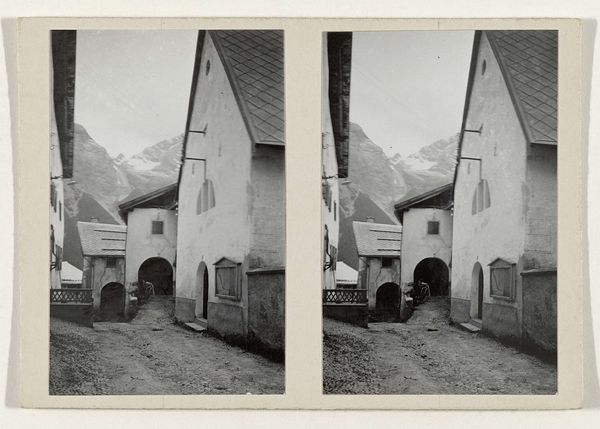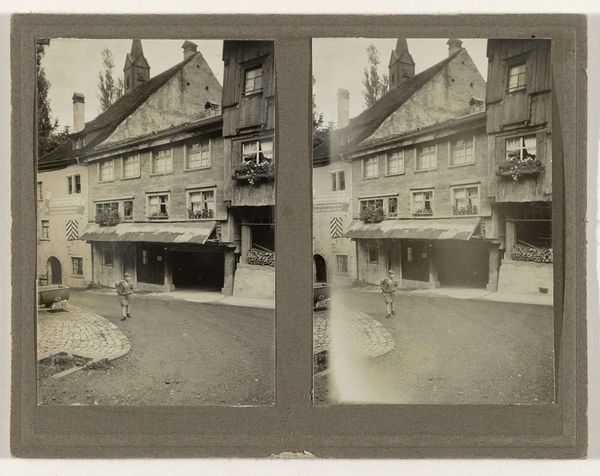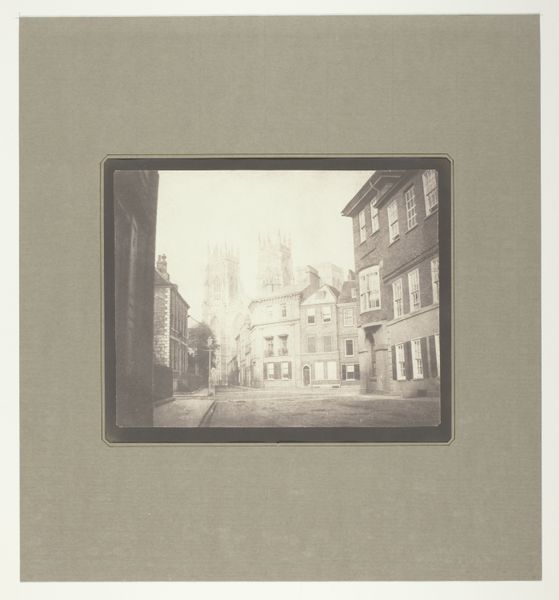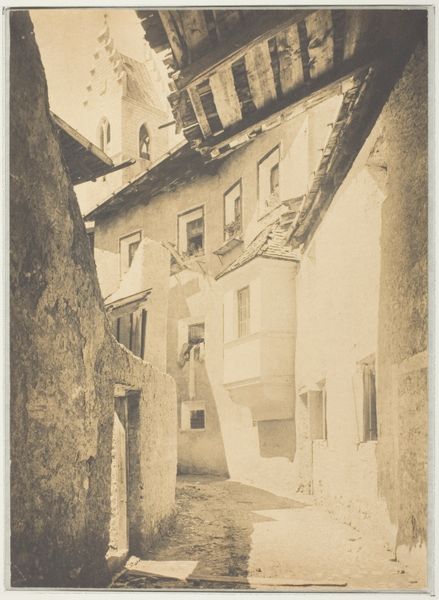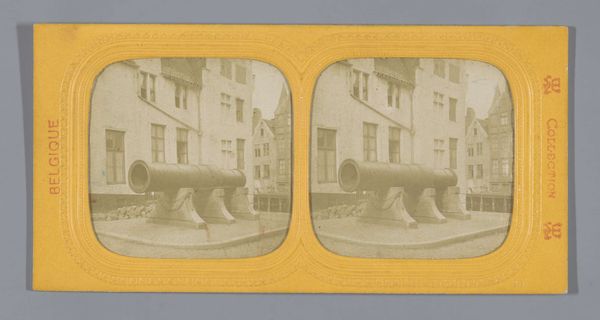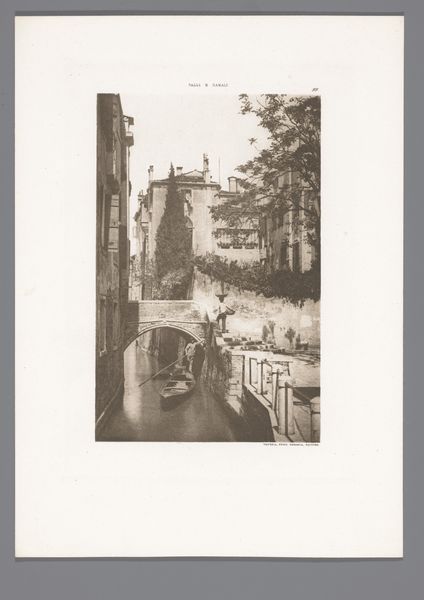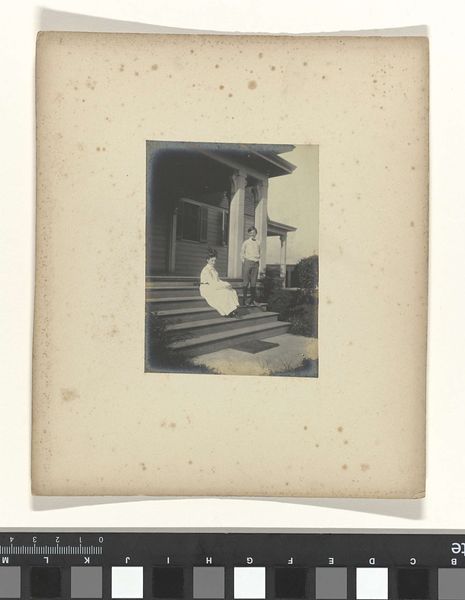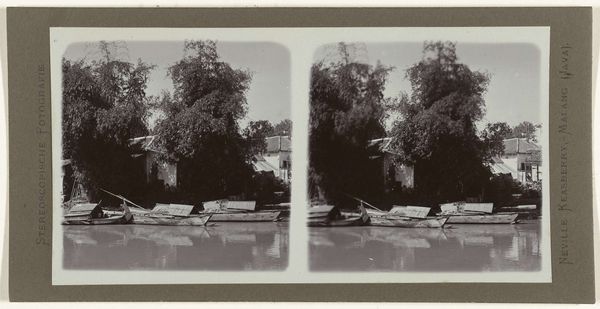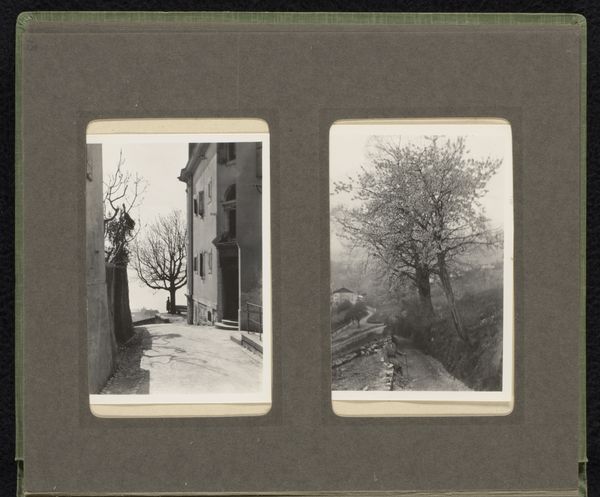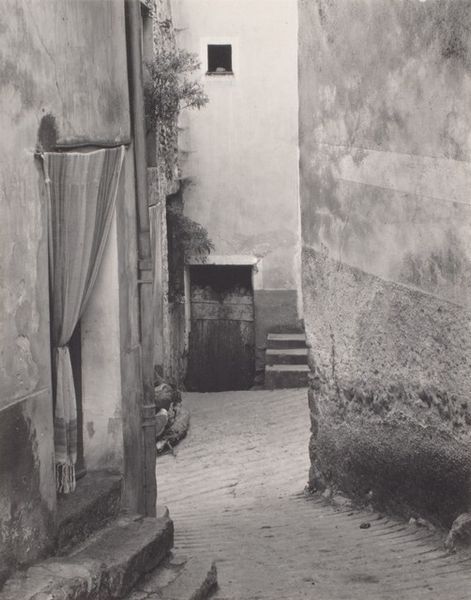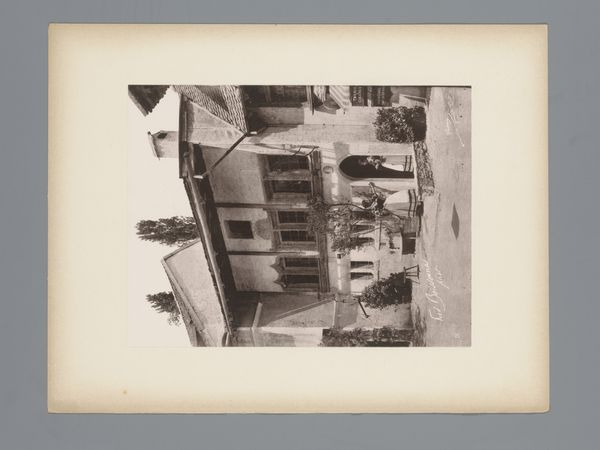
#
photo of handprinted image
#
muted colour palette
#
sculpture
#
charcoal art
#
desaturated colour
#
unrealistic statue
#
carved into stone
#
watercolor
#
statue
#
shadow overcast
Dimensions: height 80 mm, width 104 mm
Copyright: Rijks Museum: Open Domain
Curator: Looking at this striking image, what's your initial response? Editor: A somewhat melancholic scene. The subdued tones lend the photograph an air of faded grandeur. There is something about the linear perspective and the geometrical layout that hints at photographic skill, combined with architectural knowledge and design. Curator: This is "Groep op de balustrade van een woning," or "Group on the Balustrade of a House," believed to be captured sometime between 1920 and 1945, created by Geldolph Adriaan Kessler and currently housed in the Rijksmuseum. I am intrigued by the presence of this unnamed "group." They could represent the landed gentry, secure behind stone walls, caught on the precipice of an epochal shift. It’s like a moment of suspended animation between world wars. Editor: That interpretation gives historical and sociological grounding to this photograph; however, let’s not overlook the artist's treatment of light and shadow. The building’s stark geometry stands against a soft, overcast sky, blurring depth perception, whilst simultaneously creating a harmonious tension and contrast. I also detect how the balcony railing intersects and interacts, delineating distinct, although perhaps partially blended, spaces for a population of human figures. Curator: Indeed, the visual contrasts emphasize socio-economic differences; while there are those of colour, class, and gender. The composition suggests an interrogation of power dynamics through this lens. Where might those located in a place such as this one have occupied in society, during the first half of the twentieth century? Who was permitted entry? To what social strata did the residents, workers, visitors and managers belong? The photographer forces viewers to question social access through this structural photograph. Editor: Undoubtedly, but without an appreciation of composition or technical processes, these questions become speculative assumptions, disconnected from how visual design determines meaning. Curator: Fair enough. Viewing it through your lens is just one step in unpacking layers of meaning related to broader narratives concerning place, belonging, exclusion, and legacy. Thank you for that perspective. Editor: And, similarly, thank you. Your considerations ensure it isn’t merely an aesthetic experience, encouraging us to look closer and deeper, even if not to always find easy or reassuring conclusions.
Comments
No comments
Be the first to comment and join the conversation on the ultimate creative platform.
